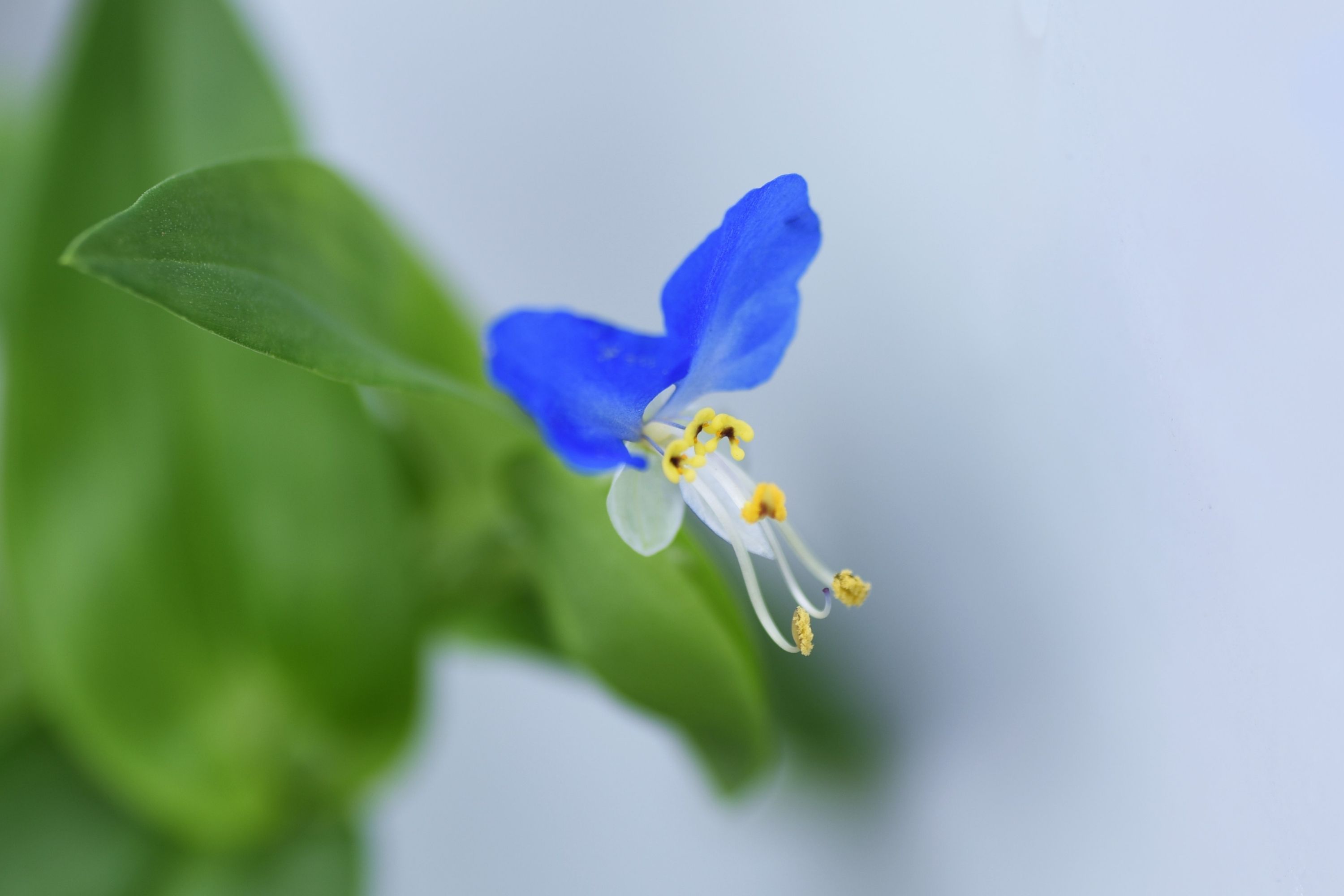Dayflower
(Commelina communis)

Description
Commelina communis, also known as Asiatic dayflower or simply dayflower, is a plant species that belongs to the family Commelinaceae. This species is native to Asia, but it has spread to other parts of the world, including Europe, North America, and South America. The plant is widely known for its attractive blue flowers, which are typically open during the daytime and closed at night. Description Commelina communis is an herbaceous annual or perennial plant that typically grows to a height of 30-60 cm. The stems are often prostrate and branching, and they are usually hairless or slightly hairy. The leaves are alternate and simple, and they are generally ovate or elliptic in shape, measuring 5-20 cm in length and 2-10 cm in width. The leaf margins are entire or slightly toothed, and the leaves are often shiny and hairless on the upper surface. The flowers of Commelina communis are small, measuring 1-2 cm in diameter, and they are typically blue in color. The flowers are borne on peduncles that arise from the axils of the leaves. Each flower has three petals, two of which are large and blue and the third is small and white. The flowers are typically open during the day and closed at night or during cloudy weather. Distribution and Habitat Commelina communis is native to Asia, where it is found in China, Japan, Korea, and other countries in the region. The plant has been introduced to other parts of the world, including Europe, North America, and South America, where it has become naturalized. In the United States, Commelina communis is found in the eastern and central regions, as well as in California. Commelina communis grows in a variety of habitats, including meadows, fields, waste areas, and disturbed sites. The plant prefers moist, fertile soils but can tolerate a range of soil types and conditions. Cultivation and Uses Commelina communis is not commonly cultivated for ornamental purposes, but it is sometimes grown as a vegetable in Asia. The young shoots and leaves of the plant are edible and are used in various dishes, including stir-fries, soups, and salads. The plant is also used in traditional medicine in Asia to treat a variety of ailments, including inflammation, coughs, and headaches. Ecological Importance Commelina communis is an important food source for various insects, including bees, butterflies, and moths. The plant also provides habitat and cover for small animals, such as rodents and birds. Commelina communis can be considered an invasive species in some areas, as it can outcompete native vegetation and reduce biodiversity. However, in other areas, it can serve as a valuable food source for wildlife. Conclusion Commelina communis is an herbaceous plant species that is native to Asia but has spread to other parts of the world. The plant is known for its attractive blue flowers, which are typically open during the daytime and closed at night. Commelina communis grows in a variety of habitats and can serve as an important food source for wildlife. The plant is sometimes cultivated for its edible shoots and leaves and is used in traditional medicine in Asia. However, in some areas, Commelina communis can be considered an invasive species that can reduce biodiversity.
Taxonomic tree:







